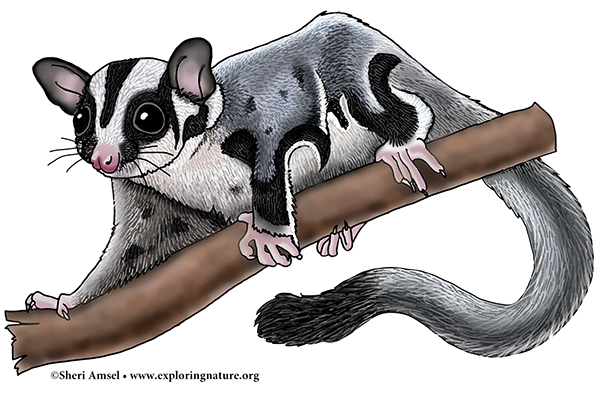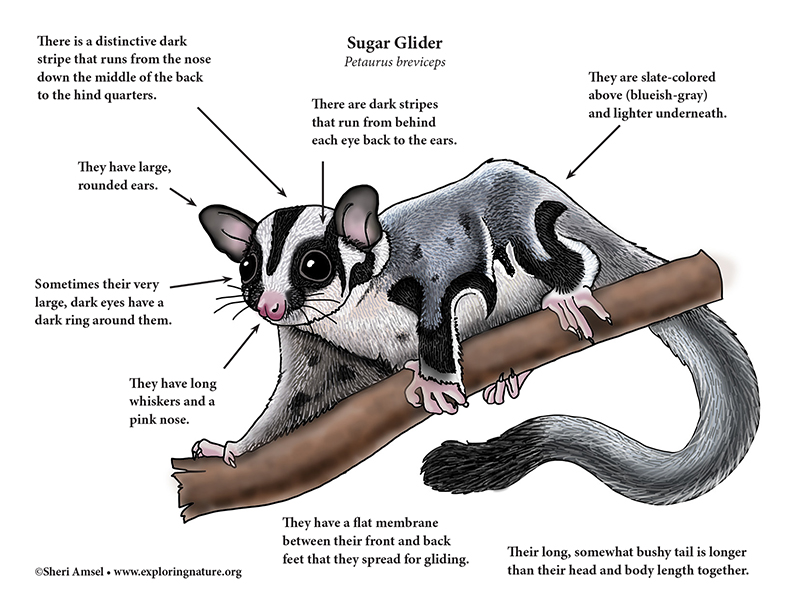

They are found in northern and eastern Australia, Tasmania, New Guinea and some outlying islands.
They live in forests up in the trees (arboreal).
They are slate-colored above (blueish-gray) and lighter underneath with a flat membrane between their front and back feet that they spread for gliding. There are dark stripes that run from behind each eye back to the ears. Sometimes their very large, dark eyes have a dark ring around them. There is also a distinctive dark stripe that runs from their nose down the middle of the back to their hind quarters. Their long, somewhat bushy tail is longer than their head and body length together, reaching up to 19 inches (48 cm) alone. The tail is used for stability while gliding. Including the tail, they can measure 10 to 31 inches (27-80cm) long. Females are smaller. They have scent glands with which they are their territory.
They are mostly nocturnal (active at night). They spread their membranes and glide between trees. They have been observed gliding up to 160 feet (50 meters). They are territorial, living in a family group in a nest or tree hollow. The largest male of the family is usually dominant and will keep out other sugar gliders not in their family by leaving his scent markers around their territory. They also may be aggressive toward unrelated sugar glider that enter their territory.
They eat insects, spiders, plants, pollen, nectar, and eucalyptus tree sap. They may eat small birds or small vertebrates when in need of protein (e.g. pregnant females). Their diet is omnivorous.
They can be preyed upon by owls, snakes, and even domestic cats.
They are pouched mammals (marsupials). Females are pregnant (gestation) a little over two weeks (about 16 days) and commonly have two very tiny young that live in their pouch nursing milk for about 10 weeks. At about 16 weeks, they are old enough to live out on their own. They may ride on their mother's back as she feeds for a short time before becoming completely independent.
They can live more than 10 years in captivity. They are not endangered in their range and are classified by the IUCN Red List as Least Concern.
Domain: Eukaryota
Kingdom: Animalia
Phylum: Chordata
Class: Mammalia
Infraclass: Marsupial
Order: Diprotodontia
Family: Petauridae
Genus: Petaurus
Species: Petaurus breviceps

